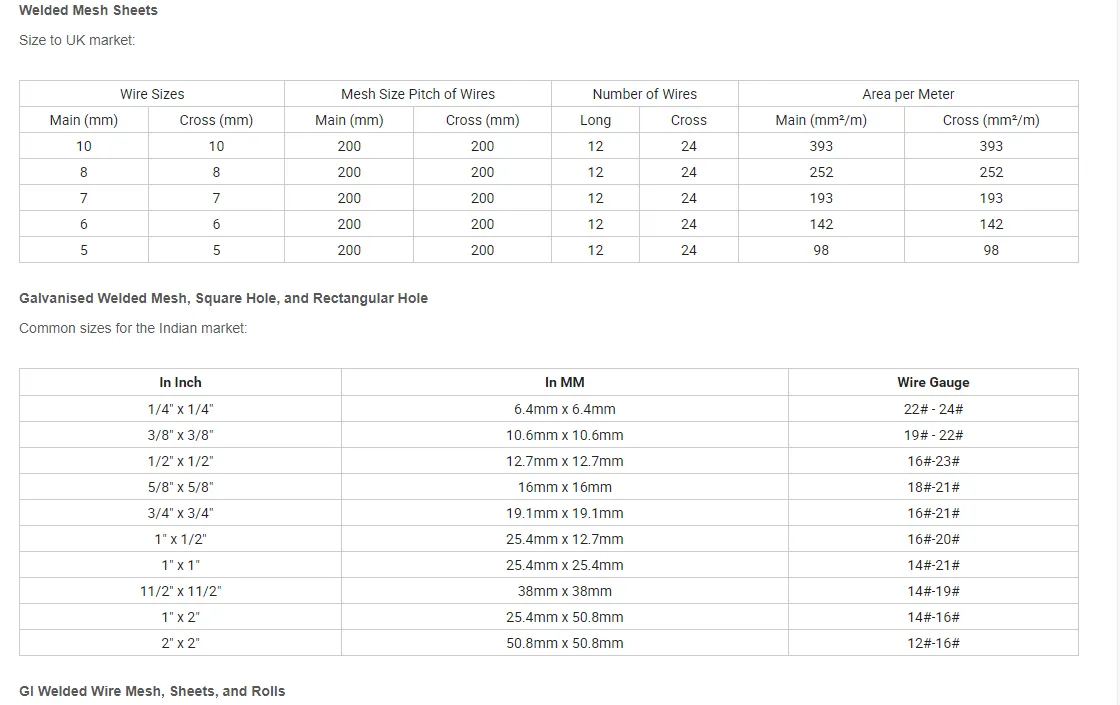Understanding Platform Grating Weight Importance and Applications
Platform grating is a crucial component in various industrial and architectural applications. These gratings serve as walkways, drainage covers, and platforms, primarily made of materials such as steel, fiberglass, and aluminum. One of the key considerations when selecting the appropriate grating for a specific application is its weight. Understanding platform grating weight is essential as it influences structural integrity, load-bearing capacity, and installation logistics.
The weight of platform grating can vary significantly depending on the material and design. For instance, steel gratings, known for their strength and durability, tend to be heavier than their fiberglass counterparts. This weight difference can impact transportation and installation. A heavier grating might require more manpower or specialized equipment during installation, while lighter materials are easier to handle and can reduce overall labor costs. Consequently, project managers must weigh these factors when deciding on the material to use.
Moreover, the weight of the grating directly affects the load it can support. Most platforms are designed to accommodate specific loads, whether it be pedestrian traffic, machinery, or other heavy equipment. Understanding the relationship between weight and load-bearing capacity is vital for safety and structural design. Engineers typically use load tables provided by manufacturers to determine if the chosen grating meets all specifications required for its intended use. Overloading a platform with insufficient weight-bearing capabilities can lead to catastrophic failures and safety hazards.
platform grating weight

Another important aspect related to platform grating weight is its impact on structural design. In construction, every element must be meticulously calculated to ensure that the overall framework can support all components, including the grating itself. A heavier grating requires a more robust supporting structure, which can influence the design and cost of the entire project. Architects and engineers must collaborate to find a balance between weight, design aesthetics, and functional requirements, ensuring that the final product is both safe and visually appealing.
Beyond the practical implications, the weight of platform grating also plays a role in sustainability. Lightweight materials, such as advanced composites, can reduce the carbon footprint associated with transportation and installation. As industries increasingly prioritize sustainability, the choice of grating material and its weight becomes even more critical. Selecting lighter materials can lead to less energy consumption during transportation and installation, aligning with global efforts toward more eco-friendly construction practices.
In conclusion, the weight of platform grating is a multifaceted consideration that impacts structural integrity, load-bearing capacity, installation logistics, and sustainability. By understanding these factors, project managers, engineers, and architects can make informed decisions that ensure the safety, functionality, and environmental responsibility of their designs. Understanding platform grating weight not only enhances the quality of engineering and architectural projects but also supports a commitment to safety and sustainability in industrial applications. As techniques and materials continue to evolve, ongoing research into the properties and applications of grating will further refine this essential component of modern construction.
-
The Strength and Versatility of Aluminum Expanded Metal Mesh
NewsJun.10,2025
-
Safety Guards and Machine Enclosures Using Expanded Mesh
NewsJun.10,2025
-
Performance with Round Hole Perforated Mesh in Wall Panels
NewsJun.10,2025
-
How Steel Grating Trench Covers Distribute Weight Efficiently
NewsJun.10,2025
-
How Deck Mesh Railing Enhances Backyard Aesthetics
NewsJun.10,2025
-
Comparing Bar Thickness and Spacing in Steel Grating
NewsJun.10,2025
Subscribe now!
Stay up to date with the latest on Fry Steeland industry news.

